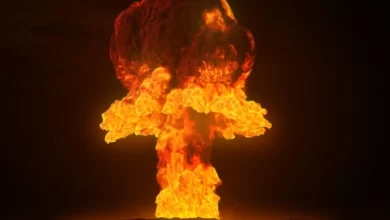Chandrayaan-3 represents India’s ambitious leap into lunar exploration, aiming to build upon the successes and lessons learned from its predecessors. As the third mission in the Chandrayaan series, it embodies India’s commitment to advancing space exploration and scientific discovery. Equipped with state-of-the-art instruments and technology, Chandrayaan-3 aims to further unravel the mysteries of the Moon, exploring its surface in greater detail and probing its geological composition. With each mission, India solidifies its position as a key player in the global space community, pushing boundaries and inspiring generations to dream beyond the confines of our planet.
- Mission Components: Unlike Chandrayaan-2, which consisted of an orbiter, lander, and rover, Chandrayaan-3 primarily included a lander and a rover.
- Objective: The primary goal of Chandrayaan-3 was to demonstrate the ability to perform a soft landing on the Moon and to operate a rover on the lunar surface. This mission aims to build on the experiences and lessons learned from Chandrayaan-2, particularly addressing the challenges faced during the landing phase.
- Launch Details: Initially targeted for a 2020 launch, Chandrayaan-3 has been rescheduled to a later date due to delays caused by the COVID-19 pandemic and other technical challenges. The mission was launched on 14 July 2023.
- Landing Site: Chandrayaan-3 was landed near the south pole of the Moon, an area of particular interest due to the potential presence of water ice and other volatile substances. This region remains relatively unexplored compared to other parts of the Moon.
- Launch Vehicle: The 3900 kilogram Chandrayaan-3 composite was successfully inserted into a parking orbit measuring 170 x 36,500 km on July 14, 2023, by the LVM3 M4 rocket. Around 9:12 UTC on November 15, 2023, the LVM3 M4’s Cryogenic Upper Stage (C25) (NORAD ID: 57321) made an uncontrollable re-entry into Earth’s atmosphere.
- Technological Enhancements: ISRO had implemented several technological enhancements in Chandrayaan-3, including improvements to the lander’s legs, better communication systems, and more robust hardware to increase the mission success rate.
- Scientific Instruments: The rover of Chandrayaan-3 was equipped with scientific instruments to analyze the lunar soil, study the Moon’s atmosphere, and gather data on seismic activity. This helped scientists understand the Moon’s composition and geophysical properties better.
- Budget: The mission was very much cost-effective, with a budget significantly lower than many other lunar missions. This cost-efficiency demonstrates ISRO’s ability to execute space missions with high technical competence at a fraction of the cost of its international counterparts. It’s budget was just 600 Cr INR which is 3 time less than a average budget Hollywood movie.
- Global Collaboration: While ISRO lead the mission, Chandrayaan-3 has opened opportunities for international collaboration in terms of sharing scientific data and insights gained from the mission, fostering a spirit of global cooperation in space exploration.
- Inspiration for Future Missions: Success with Chandrayaan-3 enhanced India’s reputation in global space endeavors but also pave the way for more ambitious missions, including manned lunar missions and interplanetary exploration.
- Educational and Cultural Impact: The mission left a significant impact on inspiring young students and researchers in India and around the world, promoting an interest in space science and related fields. It also carries a deep cultural significance, boosting national pride and demonstrating technological prowess.
- Mission Life: The operational life of the mission was of One lunar Day which is equivalent to 14 Earth Days.
- Mass: The total weight of the propulsion module was 2148 Kg. The lander module contained a weight of 1752 kg including rover of 26kg. The total weight of both these modules was 3900 Kg.
- Science payloads: The following Payloads were there on the lander and rover
• Radio Anatomy of Moon Bound Hypersensitive ionosphere and Atmosphere (RAMBHA)
• Chandra’s Surface Thermo physical Experiment (ChaSTE)
• Instrument for Lunar Seismic Activity (ILSA)
• Laser Retroreflector Array (LRA) Rover:
• Alpha Particle X-Ray Spectrometer (APXS)
• Laser Induced Breakdown Spectroscope (LIBS) Propulsion Module:
• Spectro-polarimetry of HAbitable Planet Earth (SHAPE) - Power Generation: The propulsion system was able to generate 758w of power. Whereas the lander was able to generate 738w and rover generated around 50 w of power.
- Lander Sensors: The following senors were used in the mission.
• Laser Inertial Referencing and Accelerometer Package (LIRAP)
• Ka-Band Altimeter (KaRA)
• Lander Position Detection Camera (LPDC)
• LHDAC (Lander Hazard Detection & Avoidance Camera)
• Laser Altimeter (LASA)
• Laser Doppler Velocimeter (LDV)
• Lander Horizontal Velocity Camera (LHVC)
• Micro Star sensor
• Inclinometer & Touchdown sensors






